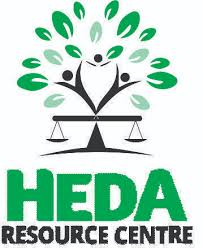Nigeria’s downstream oil market is facing heightened volatility as new data from the Major Energy Marketers Association of Nigeria (MEMAN) Competency Centre reveals a significant rise in the estimated cost of importing refined petroleum products. The MEMAN Energy Bulletin released on Tuesday, June 3, 2025, outlines key developments in fuel pricing, foreign exchange dynamics, and the global crude oil landscape.
Rising Import Costs Amid Currency Instability
According to MEMAN, the import parity cost (IPC) for refined products — calculated at Nigerian Ports Authority (NPA) terminals and the ASPM Jetty in Apapa — has increased sharply across all categories. These include Premium Motor Spirit (PMS), Automotive Gas Oil (AGO), and Aviation Turbine Kerosene (ATK).
-
The average 30-day IPC for PMS reached ₦896.23 per litre, with spot prices at ₦874.19/litre (NPSC – NOJ) and ₦874.08/litre (ASPM).
-
AGO’s average 30-day price rose to ₦982.99/litre, with spot pricing at ₦964.07/litre.
-
ATK prices averaged ₦938.48/litre, with a spot high of ₦986.65/litre.
These increases come despite a modest appreciation of the naira to ₦1,579.28/USD, a slight improvement from previous rates. However, analysts caution that the currency’s gain does not fully reflect underlying forex liquidity challenges, capital flight, or lingering concerns over Nigeria’s macroeconomic reform agenda.
Global Crude Prices Hold Firm
The global crude oil market remained relatively stable, providing context for the steady rise in refined product import costs. As of the bulletin date:
-
Brent crude traded at $65.63 per barrel
-
West Texas Intermediate (WTI) was at $63.35 per barrel
-
Nigeria’s Bonny Light crude climbed to $69.17 per barrel, up from $63.16 in the previous trading cycle
Additionally, the ICE Futures Europe LS Gasoil benchmark — a key index for refined product pricing — increased to $626.25 per metric ton, further pressuring importation costs.
Stock Market Reactions and Industry Concerns
Activity in the Nigerian oil and gas equities market remained largely flat. However, Oando Plc recorded a 1.29% gain, closing at ₦47.00 per share, while other major players such as Seplat, Geregu, and TotalEnergies saw no significant movement.
Meanwhile, industry stakeholders are growing increasingly concerned about the high cost of landing imported products and the subsequent impact on retail pump prices. The Nigerian Midstream and Downstream Petroleum Regulatory Authority (NMDPRA) continues to calculate parity pricing by factoring in shipping, finance, handling, and demurrage costs, with estimated financing charges averaging 32% per annum.
Dangote Refinery: Yet to Make a Mark
Despite widespread anticipation, the Dangote Petroleum Refinery has not yet significantly contributed to domestic PMS supply. The current gantry price from the refinery stands at ₦825.00/litre for PMS and ₦916.85/litre for AGO, excluding transport and handling charges. For Liquefied Petroleum Gas (LPG), the gantry price is posted at ₦840,000.00 per metric ton, with no listed coastal prices for any product categories.
Market watchers suggest that a full-scale ramp-up by Dangote could reduce Nigeria’s reliance on imports and stabilize pricing. However, present indicators show that imported fuels still dominate the market.
Policy Outlook and Future Risks
The MEMAN bulletin cautions that even with crude prices holding steady, several risk factors could sustain high fuel importation costs. These include:
-
Continued naira depreciation
-
Persistent foreign exchange shortages
-
Escalating global shipping and logistics costs
The report further highlights that arbitrage opportunities and shifting supply flows, particularly from Europe to West Africa, will shape future pricing trends.
As pressure mounts, analysts are urging the Central Bank of Nigeria (CBN) and fiscal policymakers to stabilize the exchange rate, widen forex access for importers, and invest in downstream infrastructure. A focus on reducing dependence on offshore Ship-to-Ship (STS) transfers is also advised.
With fuel landing costs surging, attention is shifting to how the federal government will navigate pricing regulation, potential subsidy interventions, and broader economic implications. The coming weeks may prove critical as public expectations clash with the realities of global market trends and domestic policy inertia.








Do you have a spam issue on this website; I also am a blogger, and I was wanting to know your situation; many of us have developed some nice procedures and we are looking to exchange methods with others, be sure to shoot me an e-mail if interested.